
The frame is a crucial part of a door’s looks and proper functioning. Here’s how much you can expect to pay to replace a door frame in your home.
Making a statement with your front door starts with the best wood for the job


Hire a door installation pro to identify the best wood for your front door based on your budget, style, and preferences.
If you’re looking for a cost-effective option, consider alder, maple, or white oak.
While cedar is moderately priced, it’s resistant to rot, warp, and insects.
Mahogany is expensive, but it might be worth it for its impressive durability and insulation.
Nothing quite makes a statement like your front door—it’s the first thing people see when they approach your house, and it’s where many family and friends greet you before stepping inside. Finding the best wood for front doors can be challenging with so many different types of wood, stains, and paint choices. But we’ve got your front entryway covered with these six types of wood for front doors.
| Type of Material | Average Lifespan (in Years) |
|---|---|
| Alder | 25 |
| Cedar | 30 |
| Cherry | 25 |
| Mahogany | 60 |
| Maple | 30 |
| White Oak | 30 |
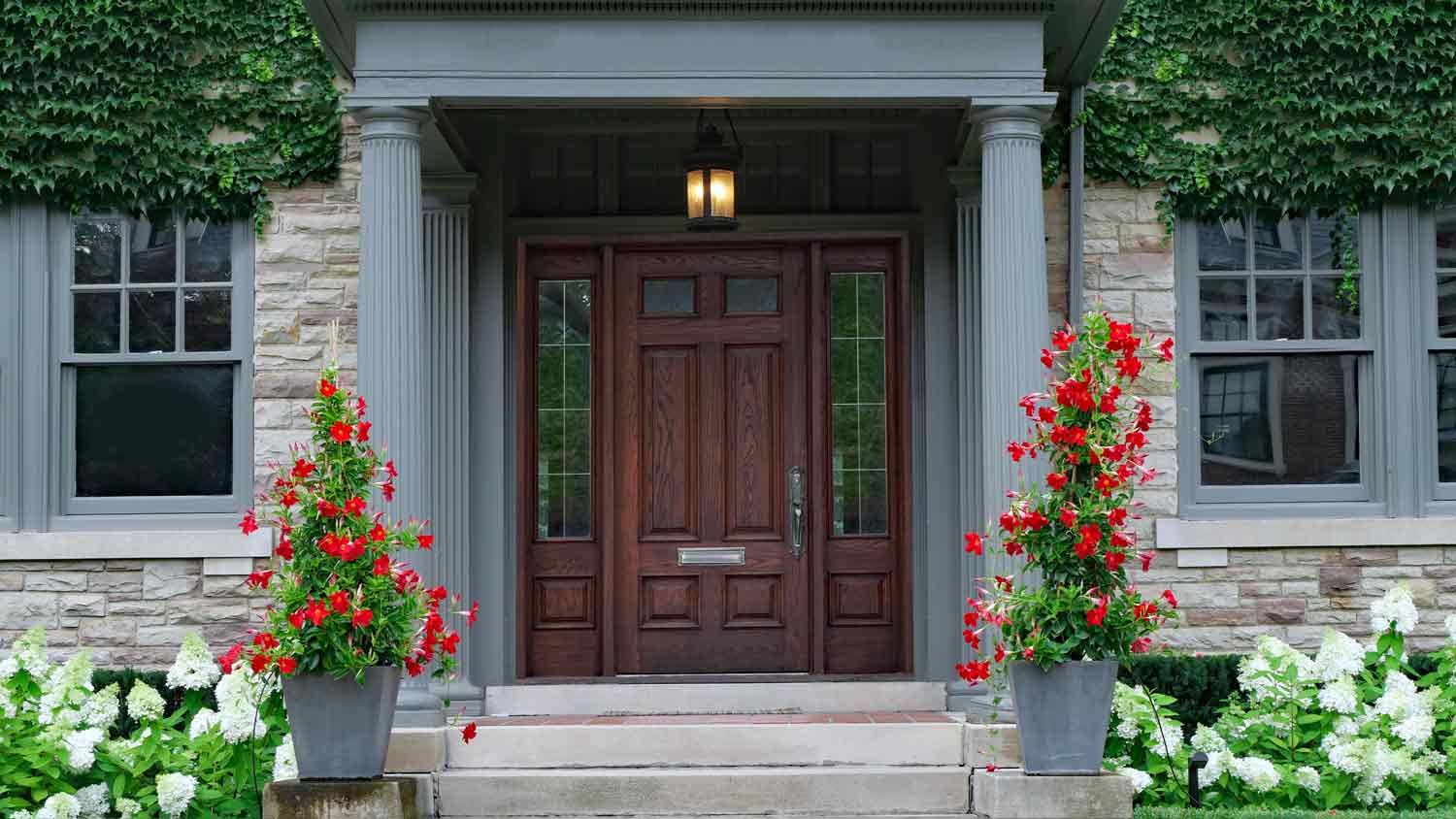
Knotty red alder is a type of tree that grows on the West Coast, making it an abundant and oftentimes sustainable material for front doors. Alder comes in light beige to red-brown colors and has knot patterns that give it a rustic appearance.
At the same time, knotty alder is considered semi-hardwood because of its lower density and softness, making it less durable than other options. Still, if you live on the West Coast and are after an eco-friendly material for your front door, then alder may be a good choice.
| Pros | Cons |
|---|---|
| Lower pricetag | Not as durable as other materials |
| Resistant to wear and tear | Less resistant to moisture |
| Often sustainably sourced | Stains unevenly |
Best for: Rustic homes on the West Coast
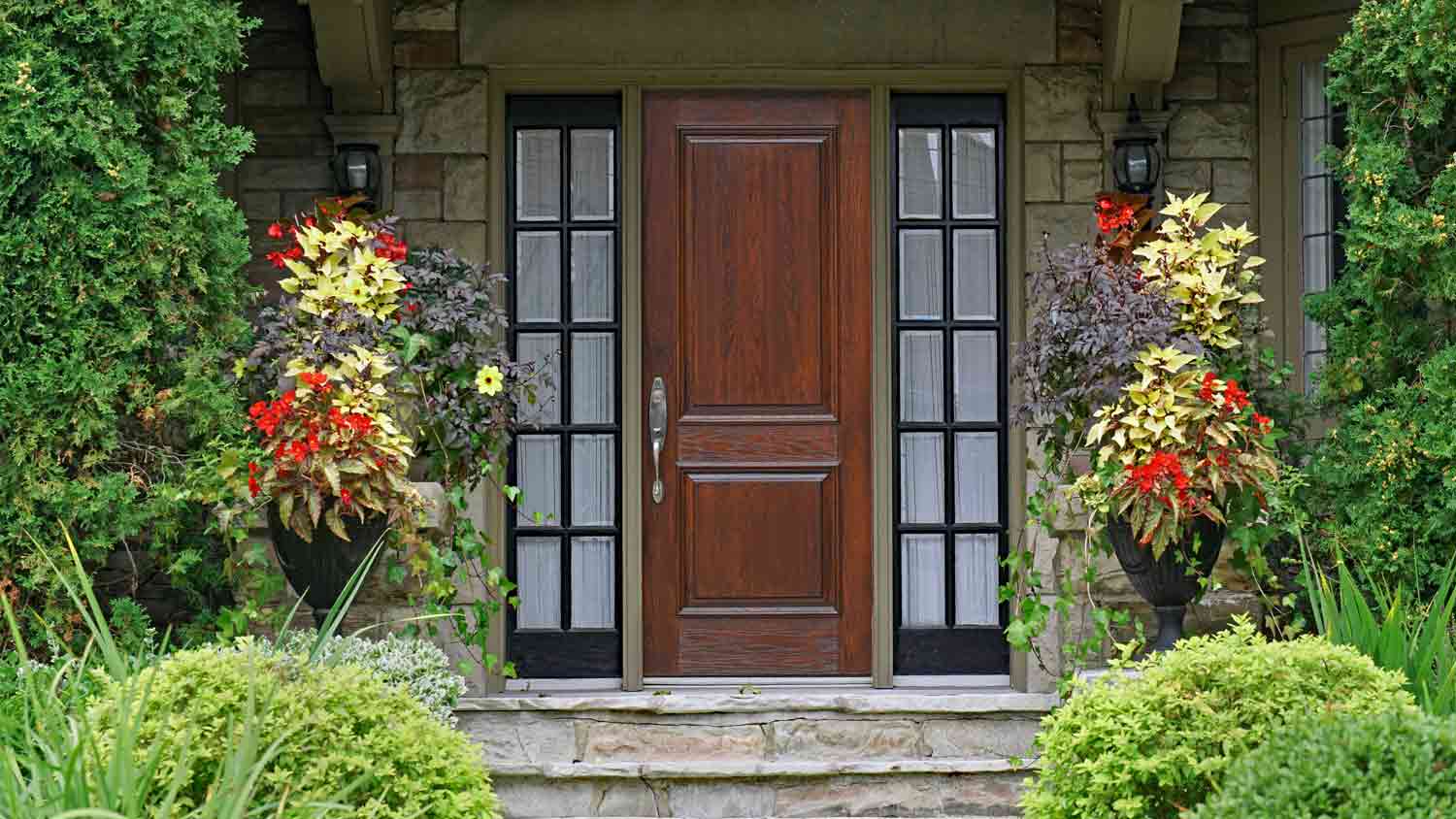
Cedar is a popular wood material for all kinds of exterior carpentry projects, from wooden decks, fences, siding, and—you guessed it—doors. This type of wood comes in warm hues of light pink to dark red-brown and has textures ranging from fine to coarse, making it suitable for all kinds of home styles.
But what sets cedar apart from other woods is its natural resistance to rot, insects, and warping. Cedar contains fragrant resins and oils that give your home a fresh smell while protecting your door from the elements.
Keep in mind, however, that cedar is still a softwood, so it doesn’t have as long a lifespan as some of its hardwood competitors. Cedar can also be more expensive depending on the quality and how readily available it is in your area.
| Pros | Cons |
|---|---|
| Rot-, warp-, and insect-resistant | Moderately priced |
| Lightweight and easier to install | Not as strong as hardwoods |
| Stain- and finish-friendly |
Best for: Homeowners looking for an economical front door with low exterior door maintenance requirements
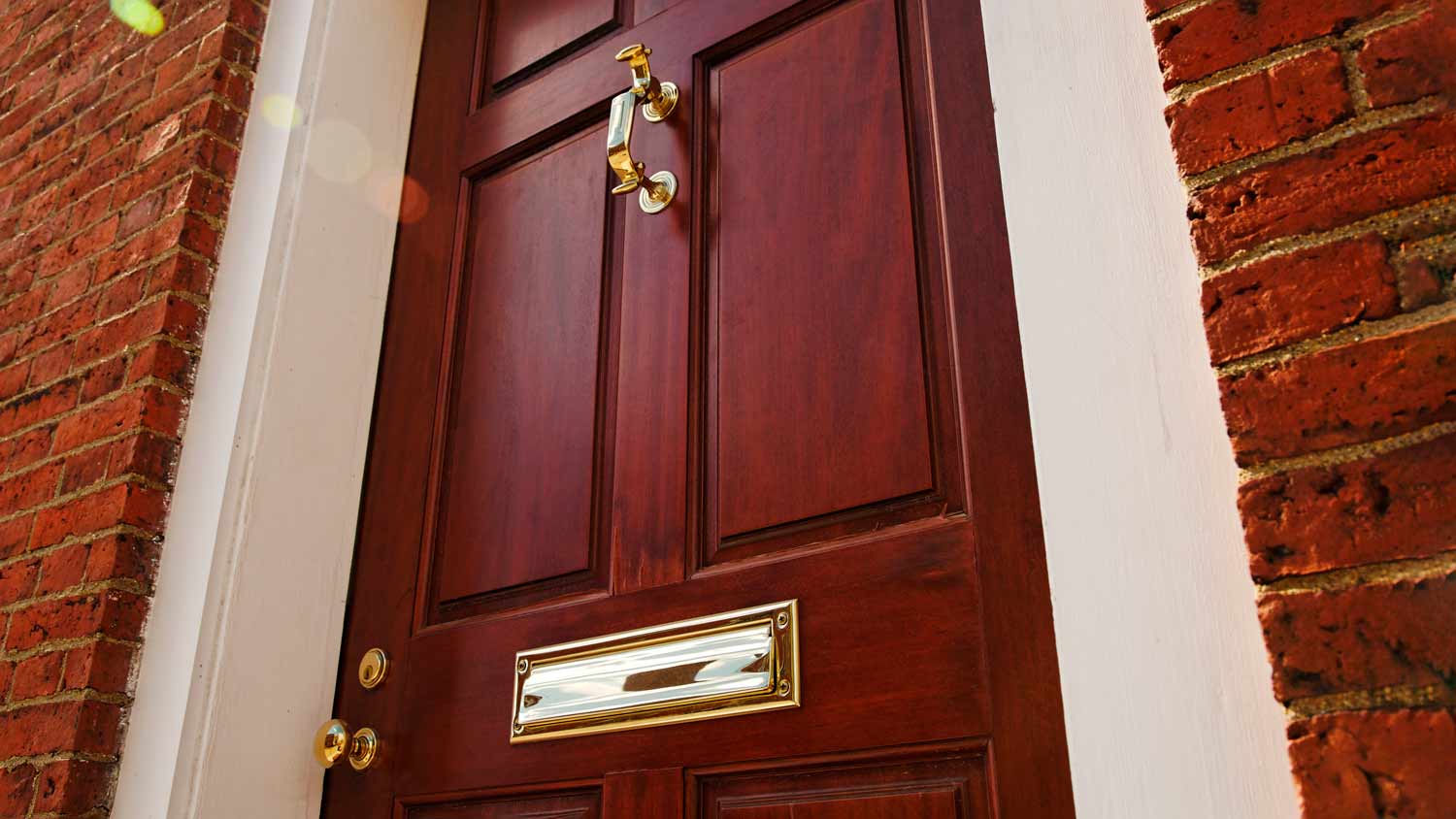
Cherry front doors are naturally red-brown in color and darken as they age. The wood contains straight grain patterns that help create a warm and traditional appearance that may fit colonial, Victorian, and Tudor-style homes well.
Cherry resembles mahogany without the higher price tag, but it still costs more than other types of wood for front doors. Because cherry wood is on the softer side of the hardness spectrum, your front door may have a higher risk of wear and tear.
| Pros | Cons |
|---|---|
| Rich colors | Higher cost than average |
| More affordable than mahogany | Requires more maintenance |
| Highly durable | Darkens over time |
Best for: Colonial, Victorian, and Tudor-style homes
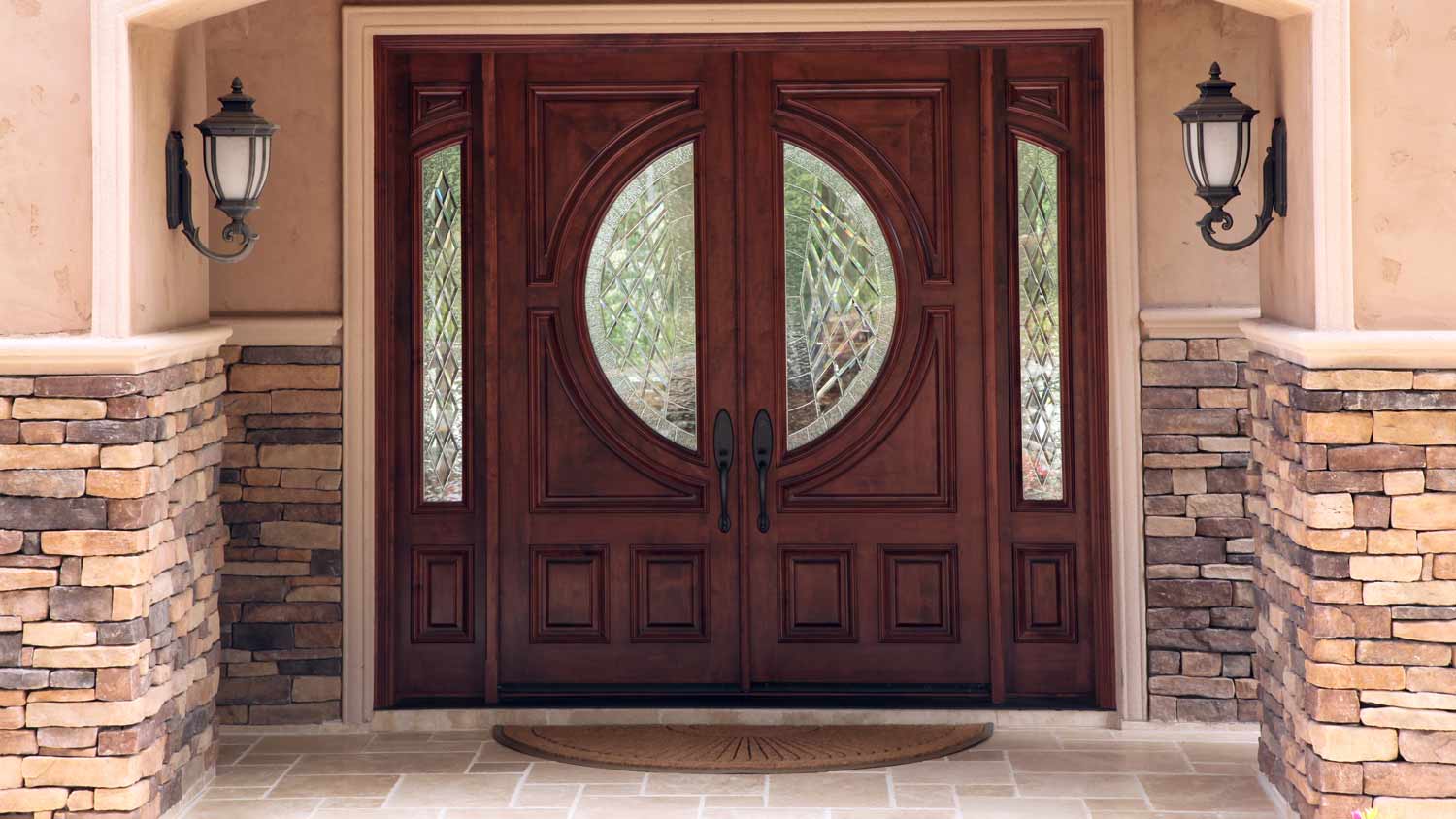
Mahogany wood offers a straight grain and dark reddish or brown appearance that can transform even the most drab entryway into one that evokes regality. While there are several species of mahogany trees, the highest quality mahogany wood is one of the strongest and densest wood materials for a front door. Due to its strength, mahogany can withstand even the harshest outdoor environments, making it a good investment for your front door.
The main downsides to a mahogany front door include its high upfront cost, risk of becoming endangered from lack of availability, and susceptibility to discoloration in sunlight. When exposed to UV rays, mahogany darkens, which can surprise some homeowners and detract from the original appearance and color scheme.
| Pros | Cons |
|---|---|
| Stunning red-brown hue | High cost |
| Great insulator | Less renewable |
| Extremely durable | Can discolor in sunlight |
Best for: Homeowners looking to spend more upfront to save more in the long run
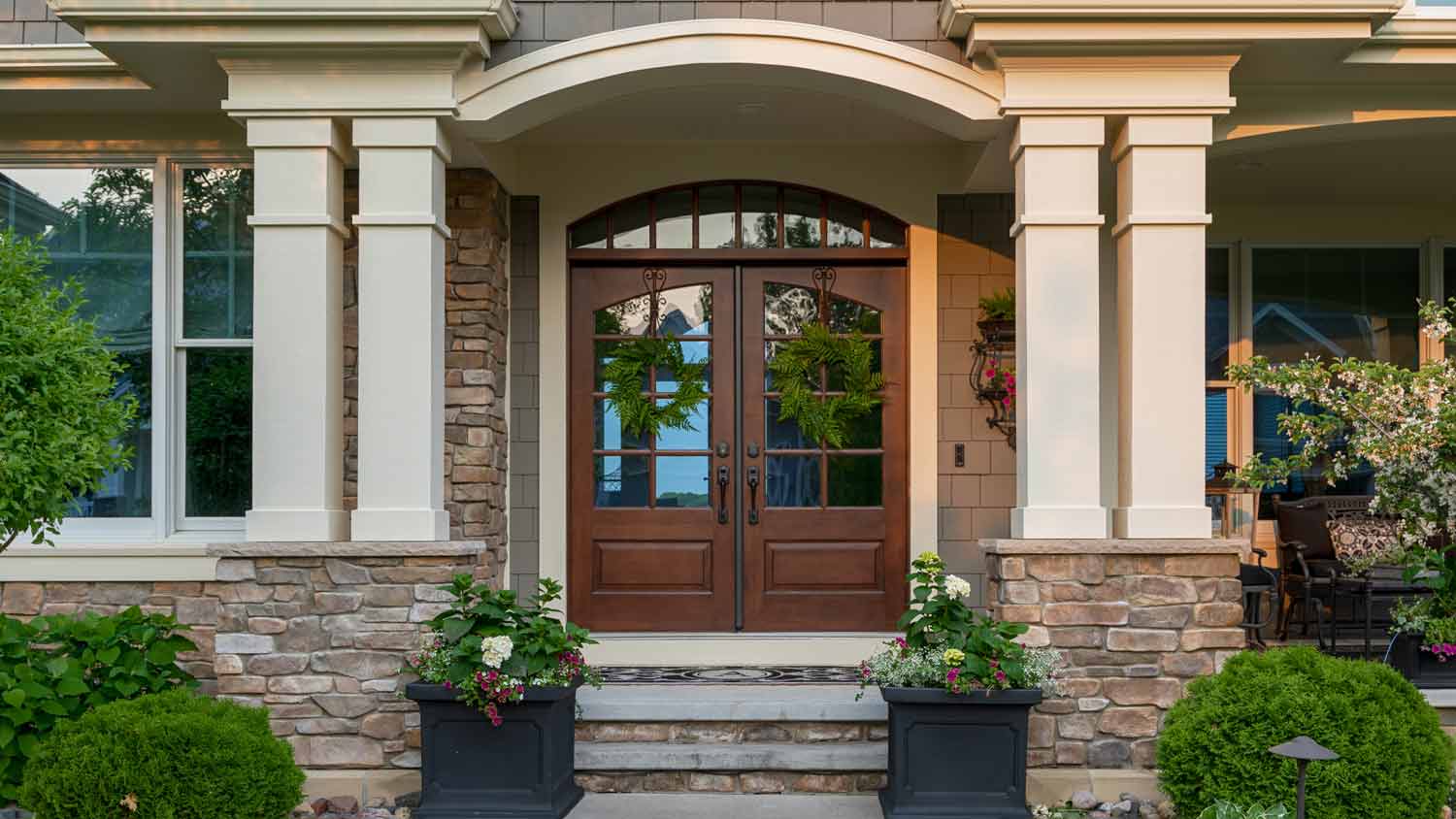
Not every homeowner wants a dark or red-hued front door. That’s where maple comes in. Maple wood has a light beige color and discreet grain pattern, making it a solid choice for a front door. Modern and minimalist homes especially benefit from the clean look that maple offers. Maple is a hardwood that ranks high on the hardness scale, making it slightly stronger than white oak but weaker than mahogany.
On the downside, maple front doors are less water- or temperature-resistant than other top contenders. You’ll need to take extra maintenance steps, like regularly cleaning and resealing the door, to ensure your maple front door can withstand the tests of time.
| Pros | Cons |
|---|---|
| Economical in cost | More prone to scratches |
| Easy to paint or stain | Susceptible to moisture and UV rays |
| Suitable for many home styles | Requires regular maintenance |
Best for: Modern-style homeowners looking for a modern flair for their front door
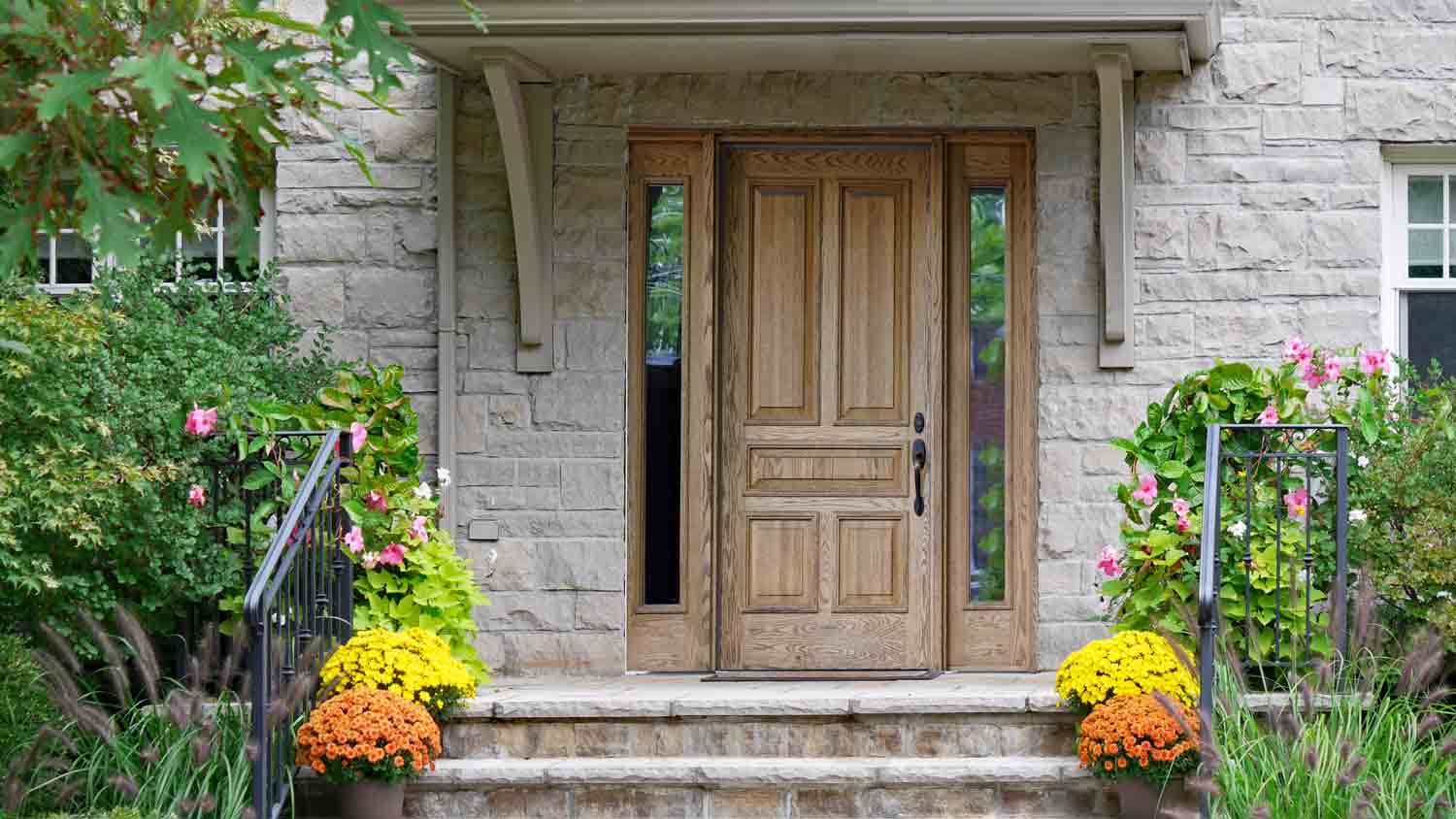
White oak is a close competitor to maple when it comes to color and strength. It has a light cream or gold appearance and a coarse grain pattern. Installing one of these doors will result in a warm, inviting doorway suitable for contemporary, Mediterranean, and rustic styles alike. White oak wood also has closed-cell properties, making it more water resistant and suitable for humid climates.
There are two main cons to choosing white oak. Firstly, you’ll need to invest in more regular maintenance. Because white oak is lighter in color, dirt is more visible, meaning you’ll need to clean your front door more often. Secondly, the coarse-grain pattern makes white oak less suited to painting. You’re best off staining your oak wood door, as the grain pattern may show through the paint if you choose a lighter color.
| Pros | Cons |
|---|---|
| Water-resistant | Less suited for painting |
| Easy to stain | More maintenance |
| Economical |
Best for: Those willing to invest extra in upkeep to maintain a clean appearance of a light-colored door
From average costs to expert advice, get all the answers you need to get your job done.

The frame is a crucial part of a door’s looks and proper functioning. Here’s how much you can expect to pay to replace a door frame in your home.

French doors upgrade your space and fill it with natural light. Use this guide so that you can accurately budget the cost to install French doors.

Discover fire door cost data, including installation, materials, and tips to save. Learn what impacts fire door pricing and how to budget for your project.

Dreaming up new home construction or an addition? Perusing through all the types of doors is a crucial step in the design process.

Discover the window-to-door conversion cost. Learn about average prices, cost factors, and tips to save on your window-to-door conversion project.

Weather stripping can boost your home’s efficiency and make your living space more comfortable. Learn about the types of door weather stripping in this guide.